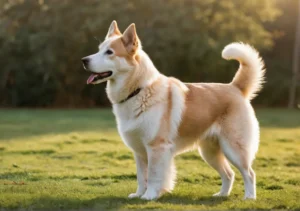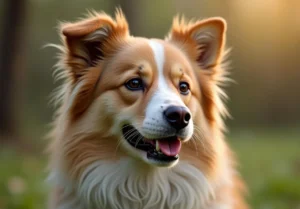If you’ve ever wondered what your dog is trying to tell you during playtime, you’re not alone. Decoding their playful antics can not only enhance your bond but also improve their training effectiveness. Dive into the world of canine communication and see how play signals reveal deeper insights about your furry friend.
Dogs express a range of emotions and intentions through their play signals, from excitement to stress. Recognizing these signs helps you tailor your training approach, ensuring it’s both enjoyable and productive for your pup. Curiously, there’s much more to these signals than meets the eye—unpacking the nuances can transform your training sessions into extraordinary experiences for both you and your dog.

What Are Play Signals Anyway?
Play signals in dogs are essentially their way of communicating that they want to engage in fun and games. These signals are crucial during training because they can tell you a lot about your dog’s emotional state and readiness to learn. When a dog displays play signals, it’s not just about letting loose; it’s a sign of comfort and eagerness, which sets the stage for effective training.
Typically, dogs exhibit these signals through specific actions like bowing, playful barking, or even darting around. Each of these behaviors indicates that your furry friend isn’t feeling threatened and is open to interaction. Understanding these signals can help you tailor your training sessions to be more engaging, responsive, and ultimately more successful. Recognizing when your dog is in a playful mood allows you to seize those moments for positive reinforcement, making learning fun for both of you.
How Does Body Language Factor In?
A dog’s body language is like a book—if you know how to read it, you can uncover a wealth of information. Posture, tail position, and facial expressions all play integral roles in signaling a dog’s willingness to engage in play.
For instance, when a dog adopts a loose, relaxed stance with its head held high and tail wagging loosely, it’s communicating an invitation to play. Conversely, a stiff posture with a lowered head may signal hesitation or stress.
Here’s what to observe:
- Tail Position: A wagging tail, especially a wide, loose wag, usually indicates excitement and openness. A low, tucked tail often suggests discomfort or submission.
- Facial Expressions: Dogs displaying a “play face,” characterized by a slightly open mouth and bright eyes, are signaling joy. Squinting eyes or a closed mouth can mean the opposite.
- Ears: Erect ears suggest curiosity and alertness, while pinned back ears often show fear or aggression.
Taking note of these body language cues will not only enrich your training experience but will also enhance the bond you share with your pup. Understanding when your dog is feeling playful versus unsure can help you adjust your training tactics accordingly.
What Sounds Indicate Play?
Dogs communicate a lot through vocalizations. Recognizing the sounds that signal playfulness can enhance your training sessions immensely. Listen for play barks—high-pitched, rapid, and often repetitive. These barks are usually a clear sign that your dog is excited and ready to have fun.
Another sound to pay attention to is a play growl. While it might sound fierce, it usually indicates enthusiasm, not aggression. Combine that with a play bow (where your dog lowers its front legs while keeping the rear end in the air), and you’ve got a clear invitation to join the fun!
You’ll also want to monitor panting—especially if it’s quick and breathy. This might indicate that your dog is in a playful mood rather than overheating or stressed. When you hear these joyful sounds, it’s often the perfect time to engage in training that incorporates play.
How Can Play Signals Indicate Stress?
Body language plays a crucial role in your dog’s emotional state during training. If your dog’s play signals suddenly shift, it might be trying to tell you something. For example, ears pinned back, a tucked tail, or a stiff body are red flags that indicate stress rather than playfulness.
On the vocal front, if you observe whining or yipping that sounds different from their usual play barks, it could mean your pup is feeling overwhelmed.
Sometimes, dogs may also exhibit avoidance behaviors. If your dog starts to pull away or disengages from play, this can signal anxiety. It’s essential to note these shifts. Adjusting your training to be more positive and relaxed can help your pup feel secure and willing to participate. Keep sessions short, and always include breaks to allow your dog to unwind.
Understanding these signals helps you create a more balanced training environment. It’s about ensuring your dog flourishes and enjoys the process!
Why Is Timing Important in Play?
Timing is crucial in dog training, especially when it comes to recognizing and responding to play signals. Dogs communicate through body language, and understanding when to react can make a world of difference in how they perceive training sessions. If you respond too quickly, your dog might feel overwhelmed, thinking that play is coming to an end. On the other hand, if you’re slow to react, your dog may lose enthusiasm or misinterpret signals.
A well-timed reaction reinforces positive behavior. For instance, if your dog drops into a play bow (front legs stretched forward, back end in the air), quickly acknowledging this with praise or a toy encourages them to continue being playful and engaged. Flipping the script—missing those signals—can lead to confusion and frustration, both for you and your pup. Always remember, the goal is to sync your responses to your dog’s moods and actions. It builds a stronger bond and makes training feel less like a chore and more like a fun game.
What Are Common Play Behaviors?
Recognizing common play behaviors helps you better understand your dog’s signals. Here are a few actions that typically indicate your dog is gearing up for some fun:
- Play Bow: That adorable gesture where they lower their front legs while keeping the back end high. This is a clear invitation to play!
- Chasing Tail: Not just a quirky trait! This can signal excitement and readiness for interaction.
- Bouncy Movements: If your dog’s bounding around, it’s a sign they’re feeling playful and energetic.
- Pawing at You: Dogs often use their paws to initiate play. If they’re nudging you, they want to engage.
- Vocalizations: Barking, growling, or playful whining can indicate they’re ready for some fun—especially if accompanied by wagging tails and eager postures.
Understanding these signals is key in ensuring your training sessions are enjoyable and engaging. The more in tune you are with your dog’s playful side, the more effective your training will become.
How Can You Encourage Positive Play Signals?
Creating an environment that fosters joyful play is crucial during training. Dogs communicate a lot through their body language, and recognizing these signals can enhance engagement. Start by using interactive toys and positive reinforcement methods. This not only captivates their attention but also strengthens the bond between you and your furry friend.
Incorporate short, playful sessions into training routines. Keeping these interactions light and fun prevents them from feeling like chores. Celebrate small victories with instant rewards—a treat, a favorite toy, or just a good ol’ belly rub. This encourages dogs to express themselves openly, showing enthusiasm and eagerness to participate.
Understanding when your dog is displaying play bows (front legs stretched forward while the rear stays up) can signal that they’re ready for fun. You can reinforce this behavior by reciprocating with some playful movement or a game of tug. Additionally, using playful vocal cues, like a happy tone when they do something right, can stimulate excitement and signal that you’re engaged.
Another useful tip is to rotate activities. If training sessions feel repetitive, mix in new games or routes for walks. A change of scenery or a new game can reignite your dog’s playful instincts and stimulate their mind.
What Recent Research Sheds Light on Canine Play?
Recent studies highlight the significant role play serves in canine development and well-being. For instance, research from the University of Kentucky shows that dogs who engage in regular play exhibit improved social skills and lower stress levels. These findings emphasize the importance of incorporating play into training regimes, as it nurtures their emotional health and fosters better behavior.
Another interesting angle is the work done by animal behaviorists at the University of Massachusetts, indicating that playful interactions can mimic real-life scenarios, helping dogs better learn impulse control. This insight encourages trainers to utilize play not just as a reward but also as a tool for behavior modification. By incorporating distractions or challenge elements during play, you can teach your dog to stay focused and engage appropriately, which translates into their everyday behavior.
The nuances of canine psychology during play also reveal that play fighting with other dogs helps develop bite inhibition and social cues. Understanding this can help you create more meaningful social experiences for your dog, promoting healthy interactions with fellow canines.
Ultimately, recent research underscores that understanding canine play not only enriches your training approach but also deepens the bond you share with your dog. Embracing playfulness in training can lead to happier, more content pups.
What Unique Tips Can Enhance Training Through Play?
Integrating play into your training sessions can supercharge learning. It’s about turning work into fun. Here are some creative ways to do just that:
Use Toys for Training : Incorporate your dog’s favorite toy into commands. For instance, toss a ball or a frisbee to reinforce “come” or “fetch.” The anticipation of play makes them more eager to respond.
Incorporate Hide and Seek : This classic game isn’t just for kids. Hide somewhere in your house or yard and call your dog, using phrases like “find me!” This helps with recall and is mentally stimulating.
Set Up Agility Courses : Use everyday objects to create a mini agility course. It could be as simple as jumping over broomsticks or weaving between chairs. Throw in treats for completing the course to keep their spirits high.
Reward with Play : Instead of treats, use playtime as a reward. If your dog does an excellent job sitting or staying, throw a ball or engage in tug-of-war. This builds a positive association with training.
Rotate Play Activities : Keep things fresh by rotating games. If you always play fetch, your pup might lose interest. Mix it up with tugging, chasing, or puzzle toys that require problem-solving.
Teach New Commands During Play : While playing fetch, teach your dog a new command like “drop it” or “wait.” Associating commands with fun activities helps them learn faster.
Observe Body Language : Pay attention to their play signals. A play bow, where they stretch front legs forward, indicates they’re ready to play. Adjust your training based on their enthusiasm level. If they seem distracted or disinterested, it might be time for a break.
By creatively blending training and play, you foster a strong bond with your dog while teaching them important skills. The key is to keep sessions lighthearted; this isn’t just about learning—it’s about having fun together.
Alex, a passionate animal lover, has experience in training and understanding animal behavior. As a proud pet parent to two dogs and three cats, he founded AnimalReport.net to share insights from animal experts and expand his knowledge of the animal kingdom.




